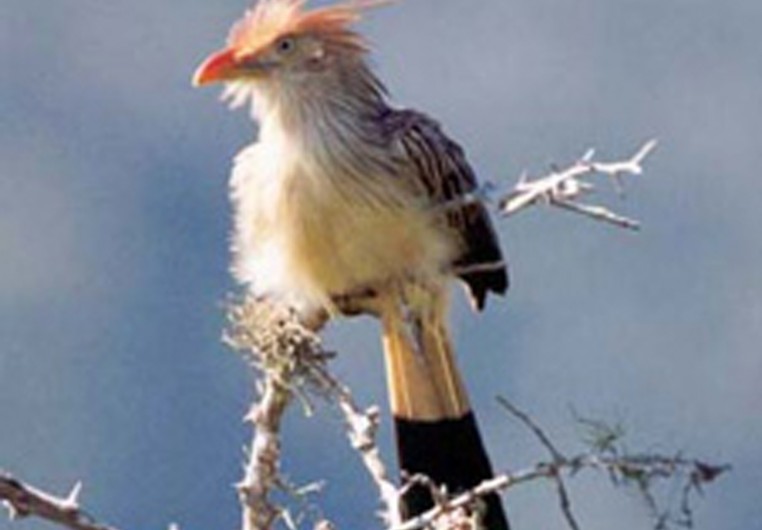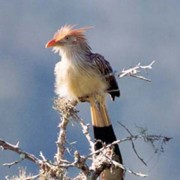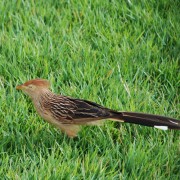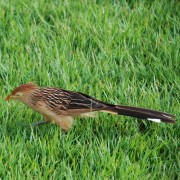Biodiversity
 Guira Cuckoo
Guira guira | Gmelin, 1788
Guira Cuckoo
Guira guira | Gmelin, 1788

Vocalization

Characterization: Medium-size species measuring about 38cm in length. It has creamy-white plumage, an orange beak, and a strong, curved, and long tail that displays a black ribbon. Its body odor is strong and distinctive, noticeable several meters away, and capable of attracting vampire bats and carnivores.
Distribution: From Southeastern Amapá and of the Amazon Estuary to Bolivia, Argentina and Uruguay.
Habitat: In the past, it used to only be seen in dry rural regions and savannas, but it has penetrated pastures, gardens, and other areas cleared by man. It disappears when a countryside area turns back into a forest.
Habits: Diurnal and extremely sociable, it always lives in flocks, which come together at night in tight rows or cluster in disorderly heaps, occupying collective territories throughout the year
Diet: Essentially carnivorous, feeding on grasshoppers, barnacles, spiders, millipedes, hairy and stinging caterpillars, lizards, small snakes, frogs or mice. But this bird may also eat fruits, berries, coconuts, and seeds, especially in the dry season when there is a shortage of arthropods.
Breeding: These birds lay their eggs in both individual and collective nests. Their abandoned nests are also used by other animals such as birds, snakes or small mammals, especially marsupials.
In the UFRA area: The guira cuckoo has an abundant spatial distribution. It was seen in nearly all studied habitats, such as organic sugarcane plantations, exotic forests, wetlands with herbaceous plants, restored native forests, native forests, drainage ditches, in forests in spontaneous regeneration and in fields in spontaneous regeneration. It is a rather frequent species, as it was spotted 36 times.






